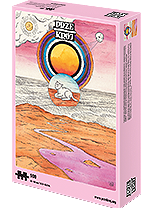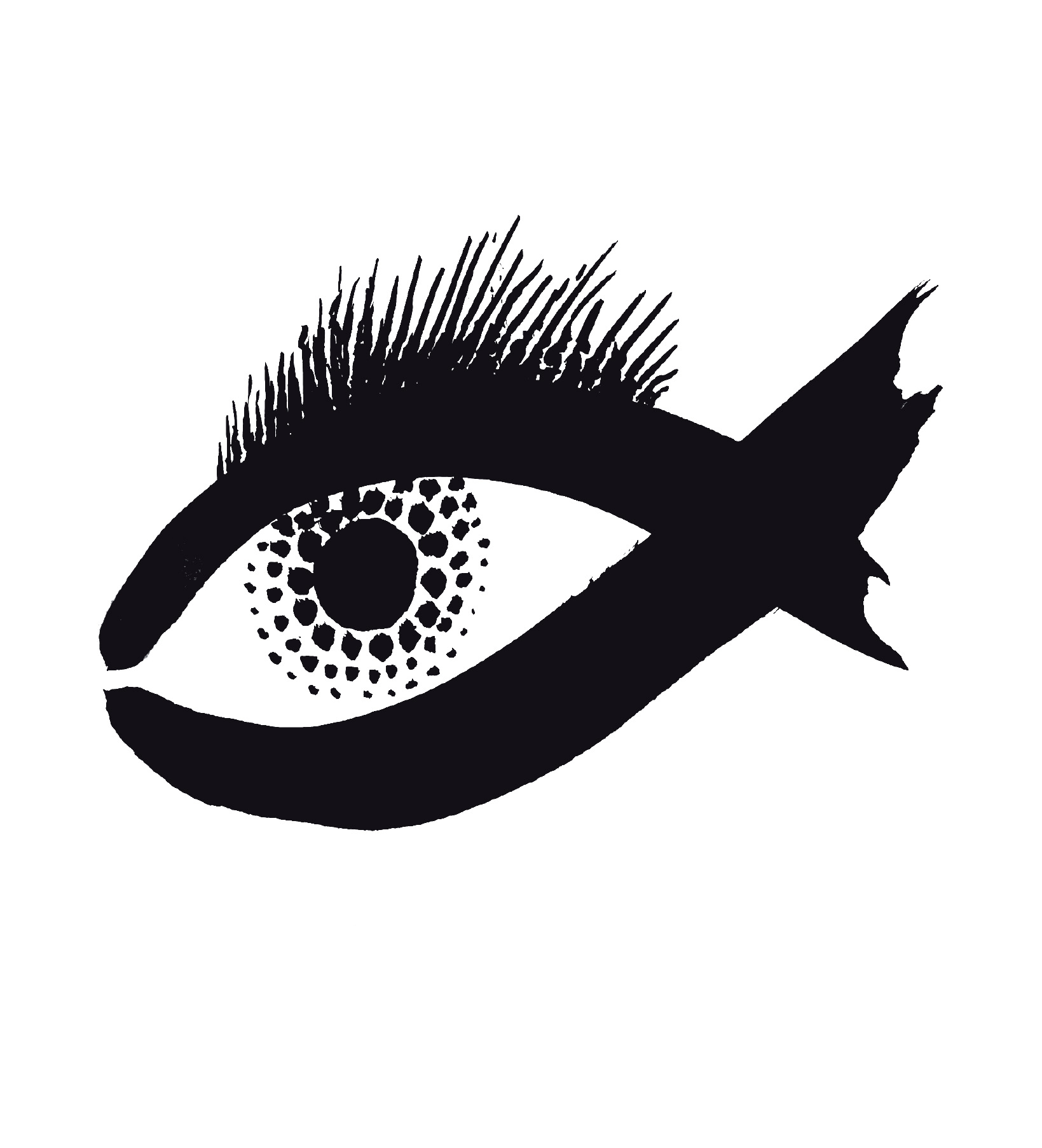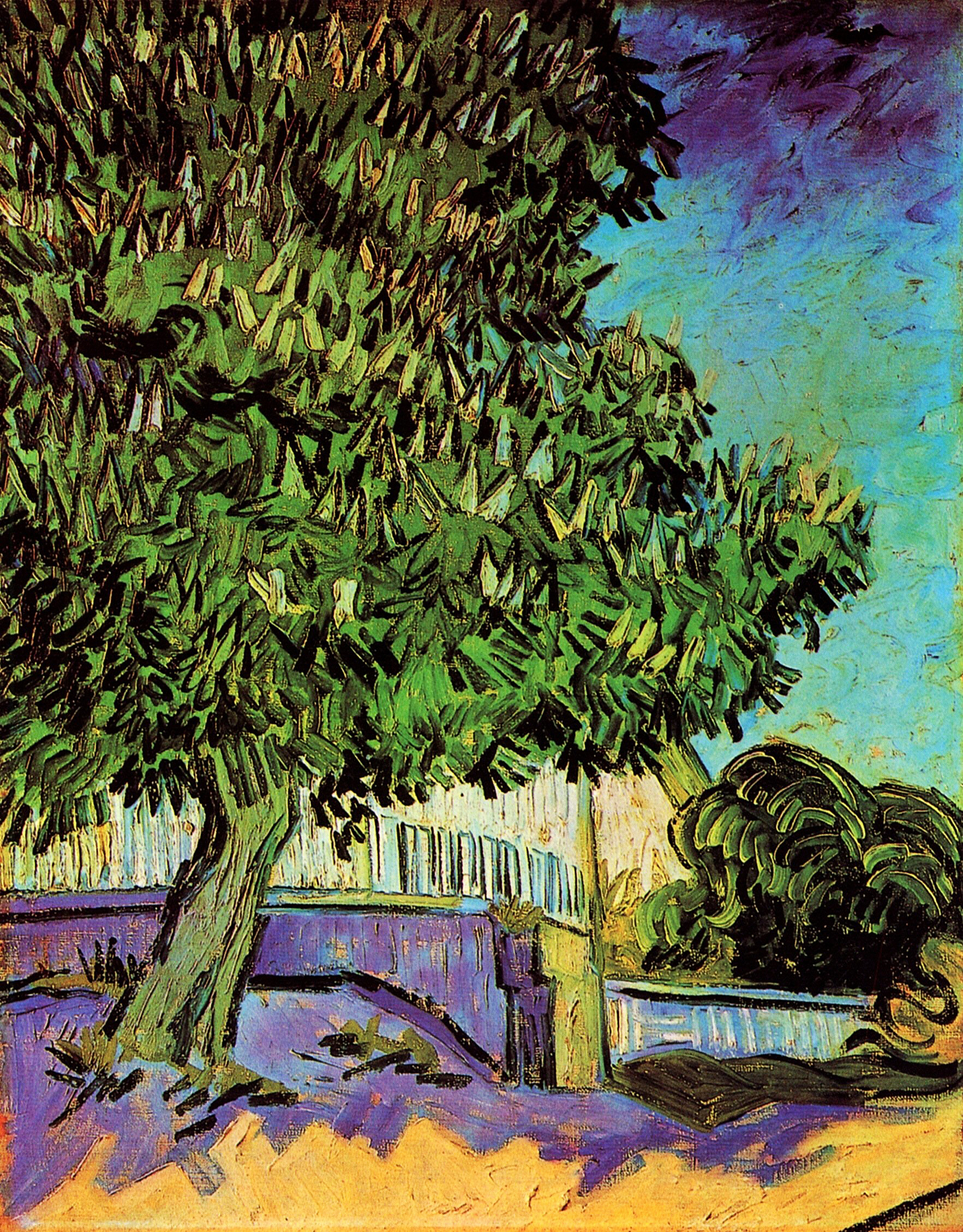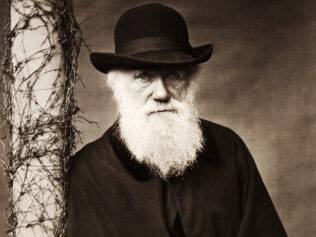
Nature’s colours and mathematical structures are fascinating. Why do the works of nature delight us so much?
I am watching a film, and I can hardly believe it is real. The film features a fish. Everything about the fish would be as normal and regular as can be, were it not for what it is up to. The fish – wait for it – is making art. The film focuses on the inconspicuous-looking male Torquigener albomaculosus. The animal’s small frame (several centimetres in length) makes me pathologically jealous, and careening towards a nervous breakdown. The little fish is making sculptures in the sea bed off the coast of Japan: energetically racking up sand, adding piles here and there and forming humps out of grains, until a mandala emerges. At the centre of the mandala, the little fish is keeping its nose to the grindstone, and the devil only knows what calculations are going on in the corners of its piscine mind. But whatever they are, they must be quick beyond comprehension: the sand snowball pressed into the seabed is being covered with fold after fold, and nook after cranny; symmetries multiply and uniqueness crystallizes. From the very beginning, the fish most likely senses this mandala will be like no other. A unique specimen; a single swing of the universe.
The Torquigener albomaculosus pufferfish is doing all this to tickle the females’ sense of aesthetics. The sand medallion serves as a nest, sculpted by the male, but it is also the male’s magnum opus; a manifestation of his strength, reflexes and sense of symmetry. The act of building the nest is also tantamount to seizing a fragment of the external world; a perfidious strategy of an organism too small to accommodate its own aesthetic concept and panache in their entirety. A fish less than 10-centimetres long flawlessly spreads hundreds of exactly symmetrical lines within a wheel with a radius of more than two metres. It is as if I would build a perfect circle of stone walls and embankments, three kilometres in diameter, without falling back on my own memory, a wider plan, GPS or a buzzing drone. Architecture can do that – alas, the results are (disappointingly) far from perfect. Were it not for boosting the brain with silicon prosthetics and enlisting the aid of a team of builders, a human being would most likely be incapable of a creation of this magnitude. I can feel the envy gnawing at me from inside.
Evolutionary biology textbooks are trying to persuade me that all of this has been known for a long time. That the aesthetics of biology was broken down many years ago and there is nothing to marvel at here – it all boils down to a handful of equations, and invisible genes manipulating their submissive receptacle. The Ghost in the Shell has been replaced with a Gene in the Shell: a selfish programming system made of jelly-sticky DNA. Still, one thing keeps bothering me: why is this sand structure so beautiful? Why is it that, out of trillions of geometric possibilities, the pufferfish has chosen precisely the one that was no less than perfect – and, in doing so, managed to make any artist self-conscious?
The golden ratio
Things do not get any easier as we go deeper into the (metaphorical and literal) woods. You see, I am watching the frustrating pufferfish footage on a wooden terrace somewhere on the slopes of San Vito, in the tropical Las Cruces research station in eastern Costa Rica. And what a lush place it is!
Hummingbirds, buzzing like fat flies, keep flying up to the feeders hanging from the wooden ceiling. There are no mirrors in the hummingbird world, so the birds are probably unaware of how exceptionally beautiful they are; how dazzlingly wonderful their luminous bodies are. Each feather is an intricately layered structure woven from greyish keratin. Dipped in the keratin, like raisins in dough, are melanosomes: nothing more than black balls, microcapsules filled with the pitch-black dye that is melanin. Grey and black. It all seems like nothing much, and yet this biochemical mixture plays with light, decomposing rays of sunlight and cutting them up. And so the greys and blacks disappear, replaced by electrifying greens, metallic purples, reflections of hundreds of colours and hues, shifting with each micro-twitch of the hummingbird’s body.
Further off, spears of some kind of ginger (or another closely-related plant) shoot out towards the sky. Lumps of red and orange – at once flowers and three-dimensional fractals – blare from the tops of rigid stems. Each of these lumps is a pile of fleshy tongues, stacked one on top of the other, again in perfect symmetry. With mathematical precision, each tongue emerges twisted by several millimetres compared with its predecessor. Botanists have long established that this millimetre shift reflects the golden ratio in the world of plants. And so the cone grows: a materialization of a single, specific number, enchanted in the laws of the universe; wondrous because it is unreal. What emerges could, of course, be studied arduously and taken apart using the instruments of botany. It would be perfectly possible to look for stamens and pistils, and for meristems churning out even packs of cells. But I cannot do any of that. Quite simply, I stare at the symmetry, feast my eyes on the perfection of the flower, free from so much as a modicum of dissonance (this thoughtless genetic machine is incapable of getting it wrong, if only by a millimetre). The tissue of the flower won’t even glitch by a shred of mathematical error, as it painstakingly adds further symmetrical petals to the folding fractal.
It’s a similar story all around. For reasons that are largely unknown, nature produces stunning beauty anywhere you look – and it would appear to do this casually. Yet despite our strenuous efforts, despite the papers published in their hundreds and thousands, we do not, as yet, stand a chance of comprehending this bioaesthetics. True, we are occasionally able to uncover its secret, if we gauge a given organism by the standards of evolutionary success. Take ginger, for example: it is in its vital interest that as many tiny red flowers as possible fit into the club-shaped inflorescence. Natural selection has no interest in fractal beauty; it does not give a fig about harmony and artistic order. The only thing natural selection determines is the success (or failure) of each individual plant. Those plants capable of fitting as many flowers as possible in the inflorescence prevailed in the evolutionary race. As luck would have it, the angle by which each flower has to turn tallies exactly with the principles of the golden ratio. This turns out to be the only way a plant can ‘cram’ as many flowers as possible into its structure and, consequently, fit in a corresponding number of seeds – still dormant and waiting for their time. These seeds are hibernated copies of the matrix plant – in other words, the only currency of biological success that matters. Evolutionary bookkeeping is thus made real by a ginger fractal, pitilessly eliminating all plants that happened to make a mistake in these geometrical calculations and introduce but a minimum of disorder into the perfect floral spiral.
The eye of the beholder
The simple principles of natural selection are not much use when coming to grips with the aesthetics of the sand mandala or the hummingbirds’ holographic feathers. After all, we are talking about the properties of irksomely arbitrary organisms. When it comes to the pufferfish, we are faced with an even greater difficulty. Rather than its own body, the pufferfish modifies its surroundings. With both the pufferfish and the hummingbird (as with millions of other species) the aesthetics serve a single purpose: to dazzle the female and break through her sensory barrier, so that she chooses this particular male – the carrier of a specific set of feathers and the author of a specific mandala – as the donor of the other half of genes for her offspring. The pressure we are discussing here is very strong indeed: the aesthetics of a single characteristic determine the zero-sum success of the genes coding those aesthetics.
The only problem is that we still don’t know what makes these particular characteristics objectively beautiful. Why do we perceive the irisation of the hummingbird’s plumage or the radial symmetry of the pufferfish’s nest as objectively aesthetic, plain and simple? And finally: why are these particular characteristics in line with the females’ preferences? Evolutionary biology finds it easy to explain how a characteristic, ‘chosen’ on one occasion, follows a winding trajectory towards ever more hyperbolic and over-the-top versions of itself. Over millions of years of natural-selection-driven evolution, a preference for a metallic flash on a hummingbird’s feather or a pufferfish’s unattractive, circular ur-nest were able to develop into the hyperaesthetic of present-day males, whose works delight us. But why is that original preference, that first moment of choice, almost exclusively to do with characteristics that later come to dazzle us with their beauty? Is there something inevitable about nature’s internal beauty? Or is it that, for reasons as yet unknown to us, our brain has been biologically programmed, atavistically formatted to perceive as beautiful the majority of natural structures, inventions and ornaments?
The aesthetics of nature have some shared characteristics. Many of the structures are ornaments based on stark contrasts, exploding into a feast of colours and shimmers. From a biological point of view, we may think of the contrasting features and the array of colours as objectively beautiful. This is because, in evolutionary terms, these characteristics are often equivalent to messages that can save our life (“Beware! My amazing colour is a warning: you’ll die if you eat me”) or ones that convey alimentary properties (“Look! My colours are pure marketing. You won’t be able to resist; have a taste of colourfulness.”). It is much more difficult to explain the human love of symmetry and shapes that reproduce fractal structures in infinite sequences of ever more minuscule geometries. The same goes for structures that grow in keeping with the golden ratio principles. The biology of these structures applies the rules of the very strange, unreal number (we cannot even write it down in its entirety!) determining the golden proportion. Is it about our brain, genetically trained to worship harmony? Or is it our subconscious, raised in the savannah, where the golden ratio was concealed in every tree that branched out, and in the anatomical structures of most animals inhabiting the grassy plains?
In the end, the answer might be quite disappointing. It is possible that the original choices of ‘ur-characteristics’ – subsequently reconstructed and perfected into masterpieces of beauty – are due to chance. And we – humans with brains all too prone to prejudice, all too ready to justify our vacuous raptures – are, quite simply, only able to see the beautiful side of things, and endow it with meaning. In other words, out of the entire hum of reality, we pick out the aesthetic aspect alone, constructing an entire alphabet of sighs around it. This aesthetics is the model we use when making art of our own: human art. I reject this way of thinking. As far as I’m concerned, nature is internally, logically, cohesively beautiful. For some reason, aesthetics is nature’s inherent property. I wonder if one day we will discover the beauty gene? Not in a hummingbird or pufferfish, but in ourselves. After all, beauty is in the eye of the beholder.
Translated from the Polish by Joanna Błachnio









